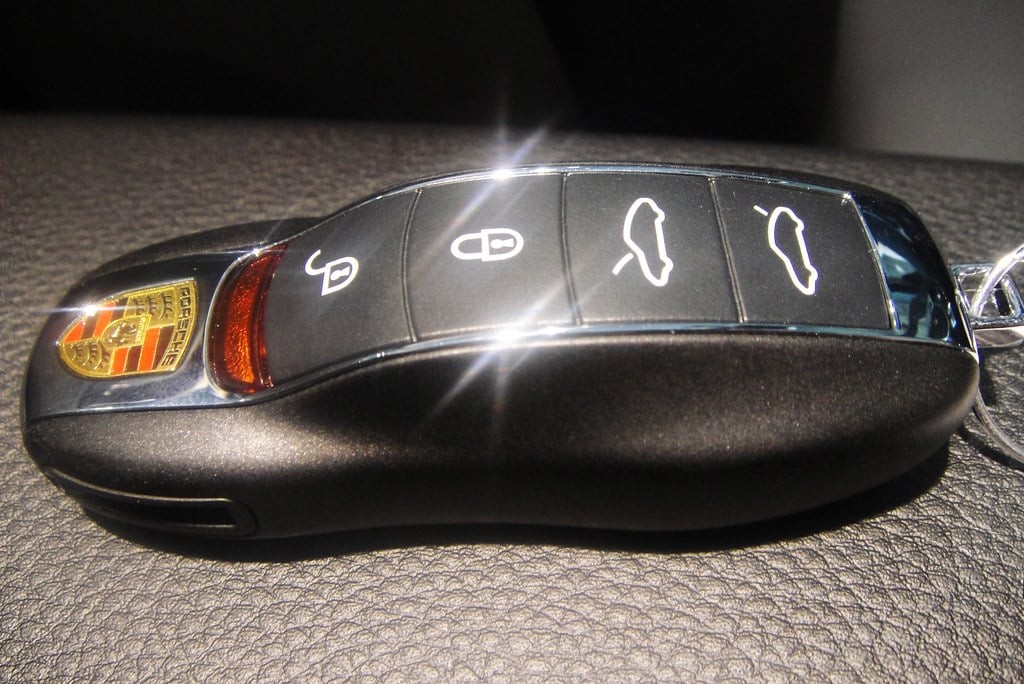Car key fobs have become indispensable for modern vehicle owners, offering convenient remote access to door locks, alarms, trunks, and even ignition. These electronic marvels, while incredibly useful, aren’t immune to signal degradation and malfunctions over time. Instead of immediately seeking out a professional, you might be able to reprogram your key fob yourself. This guide will walk you through the general steps to program a car key fob, potentially saving you time and money by avoiding a trip to the locksmith or dealership.
 Car Key Fob Programming Steps
Car Key Fob Programming Steps
While the following steps provide a general approach, it’s crucial to understand that specific programming procedures can vary significantly between car manufacturers and models. Always consult your vehicle’s owner’s manual for the most accurate and model-specific instructions on how to program your car’s key fob. You can often find a digital version of your manual on the manufacturer’s website if you’ve misplaced the physical copy.
Step-by-Step Guide to Programming Your Key Fob
This method is a common approach that works for a range of vehicles. However, remember to confirm the exact steps for your car model in your owner’s manual.
STEP 1: Prepare for Programming Mode
Begin by getting into the driver’s seat of your car, ensuring all doors are completely closed. Have your ignition key and the key fob you intend to program readily available. For most programming sequences, you’ll need to cycle the ignition.
STEP 2: Initiate the Ignition Cycle and Press Lock Button
Insert your ignition key into the ignition switch. Turn the key to the “ON” position. This is the position just before you would crank the engine to start the car; you should see the dashboard lights illuminate. Do not start the engine.
Once the ignition is in the “ON” position, take your key fob and aim it at the car’s receiver. The receiver’s location can vary but is often near the rearview mirror or on the steering column. Press and hold the “lock” button on your key fob for a few seconds.
STEP 3: Complete the Ignition Cycle and Test
Turn the ignition key back to the “OFF” position immediately after pressing the lock button. Remove the key from the ignition. At this point, the car’s system should be attempting to recognize and program the key fob signal.
Test the programming by pressing the lock or unlock button on the key fob. If the programming was successful, you should hear the car doors lock or unlock, or see the lights flash, depending on your car’s feedback system.
Programming Additional Key Fobs
If you have multiple key fobs to program, it’s essential to program them all in one session. Many car systems will erase the memory of previously programmed fobs when a new one is programmed.
STEP 4: Repeat for Additional Fobs (If Necessary)
If you need to program more than one key fob, repeat steps 1-3 immediately for each additional fob. You may need to cycle the ignition “ON” and “OFF” again for each fob, or the system might allow you to program multiple fobs within a short time frame once in programming mode. Again, your owner’s manual is the definitive guide for your specific vehicle.
STEP 5: Final System Check
After programming all desired key fobs, it’s a good practice to test each fob individually to ensure they all function correctly. Start by turning the ignition to the “ON” position (without starting the engine) and then press the lock button on each key fob in turn, verifying that the car responds to each one. Listen for the sound of the locks engaging or disengaging as confirmation of successful programming for each fob.
Important Considerations for Key Fob Programming
- Consult Your Owner’s Manual: This is the most critical step. Key fob programming methods are not universal, and your car’s manual will provide the exact procedure for your make and model.
- Timing is Key: Some programming sequences are time-sensitive. Ensure you perform the steps promptly and without delays, especially the transitions between ignition positions and button presses.
- Battery Condition: Ensure the batteries in your key fob are in good condition. Weak batteries can sometimes interfere with the programming process.
- Troubleshooting: If the programming process doesn’t work on the first try, carefully reread your owner’s manual and try again. If you continue to encounter issues, there might be a different programming method for your car, or there could be an underlying problem with the key fob or the car’s receiver. In such cases, consulting a qualified locksmith or dealership might be necessary.
Conclusion
Programming a car key fob can often be a straightforward process that you can accomplish yourself, saving you the expense of professional services. By understanding the general steps and, most importantly, by consulting your vehicle’s owner’s manual for specific instructions, you can confidently attempt to program your fob and regain convenient remote access to your car’s features. This DIY approach puts you back in control and keeps your car ownership experience hassle-free.